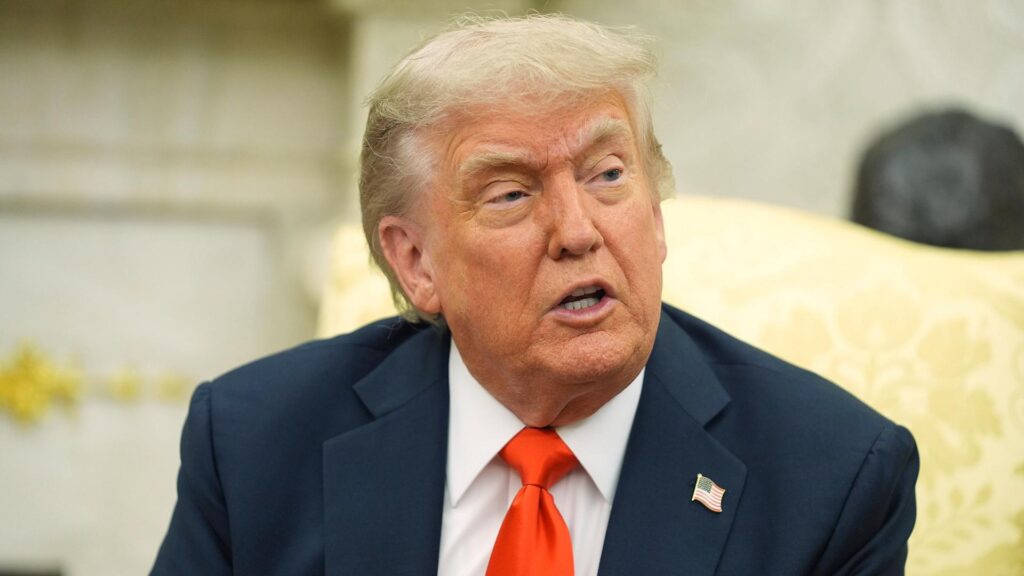In recent years, the United States has experienced a notable decline in international student enrollment, a trend that some experts attribute to the contentious policies and rhetoric of the Trump administration. As universities across the nation grapple with the implications of fewer international students, concerns grow regarding the potential economic repercussions. This article examines how former President Trump’s attacks on international student enrollment not only threaten the diversity and vitality of academic institutions but could also reverberate through the broader economy, affecting everything from local businesses to federal funding. With higher education serving as a critical driver of innovation and growth, the implications of these shifts extend far beyond the classroom, raising questions about the future landscape of American education and its global standing.
Trumps Policy Shifts and Their Impact on International Student Enrollment
The discourse surrounding international student enrollment has undergone significant transformation during Donald Trump’s presidency. His administration implemented several policies that affected both the perception and the reality of studying in the United States. These shifts include:
- Increased visa restrictions: Stricter regulations and requirements for student visas discouraged prospective international students.
- Anti-immigrant rhetoric: A narrative that painted a negative view of foreigners contributed to a less welcoming environment.
- Policy reversals on work permits: Changes that limited post-graduation work opportunities further diminished the appeal of U.S. universities.
As a result, institutions of higher education have reported a decline in international enrollment figures, which not only impacts the universities themselves but also the broader economic landscape. According to recent data:
| Year | International Enrollment | Economic Contribution (Billion USD) |
|---|---|---|
| 2016 | 1.08 million | 36.9 |
| 2019 | 1.09 million | 38.9 |
| 2021 | 970,000 | 29.0 |
The data clearly highlights an alarming trend: a decline in international students directly correlates with a decrease in economic contributions, which is vital for local communities and the nation as a whole. As universities grapple with these changes, the ramifications extend beyond academia, underscoring the necessity for a strategic re-evaluation of policies affecting international students in the U.S.
The Economic Ripple Effect: How Declining Enrollment Could Stunt Growth
The impact of declining international student enrollment extends far beyond university campuses, sending ripples through various sectors of the economy. Institutions that once thrived on the financial contributions of these students are now facing steep challenges, as their absence leads to a significant reduction in revenue. This decline manifests in several ways:
- Tuition Revenue Loss: Universities often rely on full-fee paying international students, and a drop in enrollment can lead to budget cuts.
- Local Economy Impact: International students contribute to the local economy, spending on housing, food, and services, which benefits local businesses.
- Job Opportunities: A reduction in student numbers can lead to fewer jobs in academic institutions and related industries.
Additionally, the long-term consequences may alter the landscape of higher education in the United States, as schools may struggle to maintain their global competitiveness. According to recent data, universities are already seeing a shift in demographic enrollment patterns that could potentially lead to:
| Potential Consequences | Impact on Higher Education |
|---|---|
| Decline in Research Funding | Fewer international students can result in reduced collaborative and funding opportunities for research projects. |
| Talent Drain | The potential loss of international talent may hinder innovation across various sectors. |
| Reduced Cultural Diversity | A drop in enrollment can diminish the cultural vibrancy of campuses, affecting the educational experience for all students. |
Strategies for Sustaining International Student Populations Amid Policy Challenges
As international student enrollment faces significant hurdles due to restrictive policies, educational institutions must pivot towards innovative strategies to maintain their diverse student populations. Targeted recruitment initiatives can play a crucial role in this endeavor, leveraging digital platforms for outreach to prospective students worldwide. Institutions could also strengthen partnerships with foreign educational agencies to create smoother pathways for enrollment, ensuring that application processes are accessible and welcoming. Furthermore, enhancing support systems such as mentorship programs, scholarships, and international student offices can cultivate an inviting environment that appeals to potential candidates concerned about the shifting policy landscape.
In addition, engaging local communities through cultural exchange initiatives can foster a more inclusive atmosphere that not only attracts but also retains international students. Schools and universities might organize networking events, workshops, and social gatherings that emphasize cultural diversity while encouraging interactions between domestic and international students. These efforts not only enrich the student experience but also highlight the value international students bring to local economies, ultimately reinforcing their importance during periods of political and policy uncertainty. Collaborative efforts with local businesses could also be explored, offering employment opportunities that further enhance the appeal of studying abroad.
Key Takeaways
the implications of former President Donald Trump’s rhetoric surrounding international student enrollment extend far beyond educational institutions; they pose a significant threat to the fabric of the U.S. economy. As universities grapple with declining applications from overseas students, industries reliant on their contributions may also feel the strain. The potential for reduced revenue in higher education could lead to cuts in programs, staff, and research funding, ultimately hindering innovation and economic growth. As the nation navigates these challenges, policymakers, educators, and stakeholders must engage in critical discussions about the long-term effects of these attacks and work towards fostering an environment that values the diverse perspectives and talents that international students bring to American society. The future of the U.S. economy may well depend on how we respond to these challenges today.
